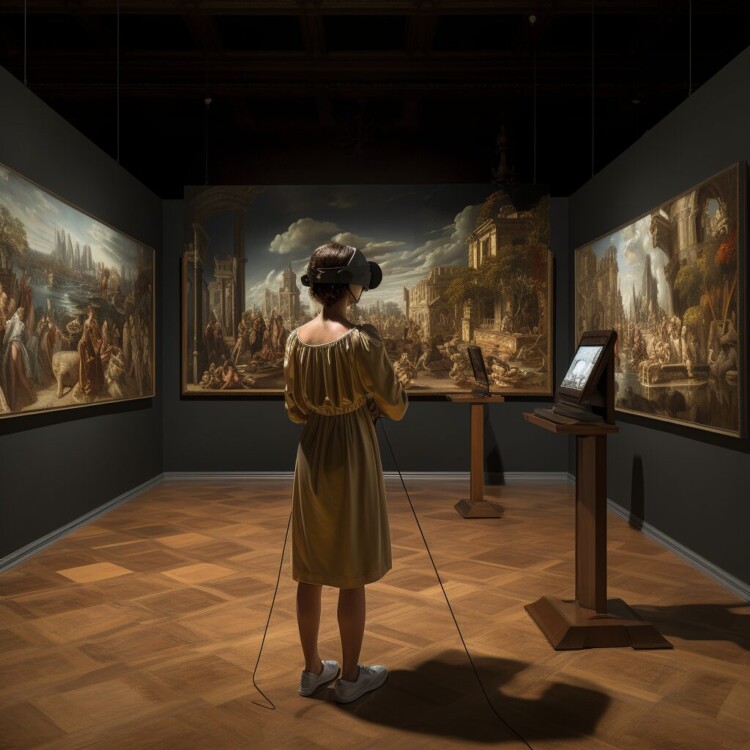Virtual museums have revolutionized the way we experience and interact with art and culture. With the help of AI technology, people can now explore museums, view famous artworks, and learn about history and culture from the comfort of their own homes.
Virtual reality (VR) and augmented reality (AR) have come a long way, transforming the realm of digital entertainment and education. Now, they are pushing the boundaries of cultural experiences as well. Let’s dive into the world of virtual museums and discover the wonders they have to offer.
Exploring Famous Artworks:
One of the most exciting aspects of virtual museums is the ability to explore famous artworks from different eras and genres. With AI-powered technology, users can zoom in on intricate details, read information about the artwork, and even listen to audio guides.
For example, imagine standing in front of the Mona Lisa in the Louvre Museum in Paris. As you explore the virtual museum, you can zoom in on the delicate brushstrokes, appreciate the painting’s famous smile, and learn about its historical significance.
Interacting with History and Culture:
Virtual museums provide a unique opportunity to interact with history and culture in a dynamic and immersive way. AI-powered features allow users to engage with exhibits through audio and visual elements that bring the past to life.
Imagine walking through a virtual ancient Egyptian temple and witnessing the rituals and traditions of the pharaohs. With AI technology, users can listen to narrations that explain the significance of the temple, watch animations depicting ancient ceremonies, and even interact with virtual characters representing historical figures.
Virtual Reality and Augmented Reality:
Virtual reality and augmented reality are integral components of virtual museums. VR provides a completely immersive experience, where users wear headsets to explore virtual environments that replicate real-world museums.
Augmented reality, on the other hand, overlays digital information onto the real world. By using smartphones or tablets, users can point their devices at specific objects or locations and see additional information or interactive elements enhancing their understanding of the exhibits.
Educational Benefits:
Virtual museums offer numerous educational benefits, making learning about art and culture more accessible and engaging. AI-powered features such as interactive quizzes, guided tours, and curated collections provide a dynamic learning environment.
Students can embark on virtual field trips to museums worldwide, learn about different art styles and movements, and even create their own virtual exhibitions. The interactive nature of virtual museums encourages active learning, critical thinking, and creativity.
Virtual museums powered by AI have opened up a world of possibilities for cultural exploration and education. Whether you’re an art enthusiast, a history buff, or simply curious about different cultures, virtual museums offer a convenient and immersive way to experience the wonders of art and heritage.
With AI technology continuously advancing, we can expect virtual museums to become even more realistic and interactive in the future. So, put on your virtual reality headset or grab your smartphone, and embark on a cultural adventure right from the comfort of your home.










